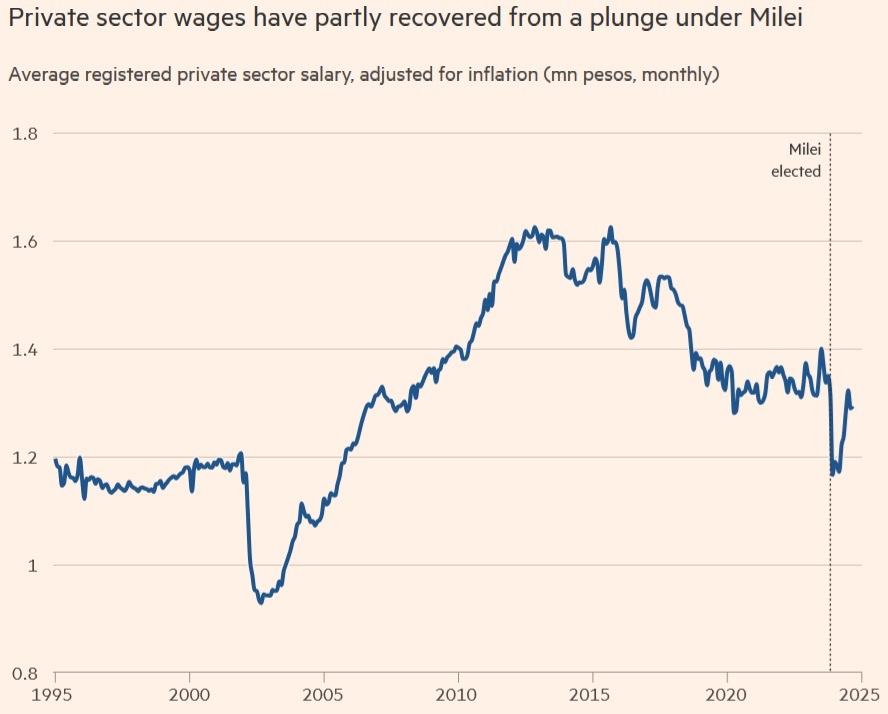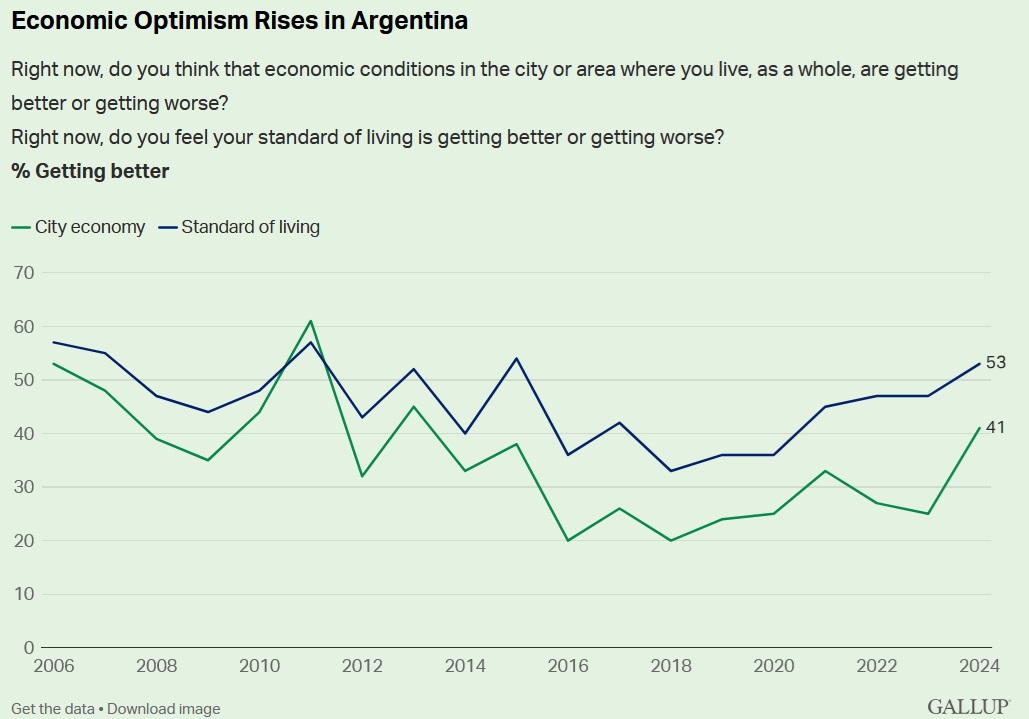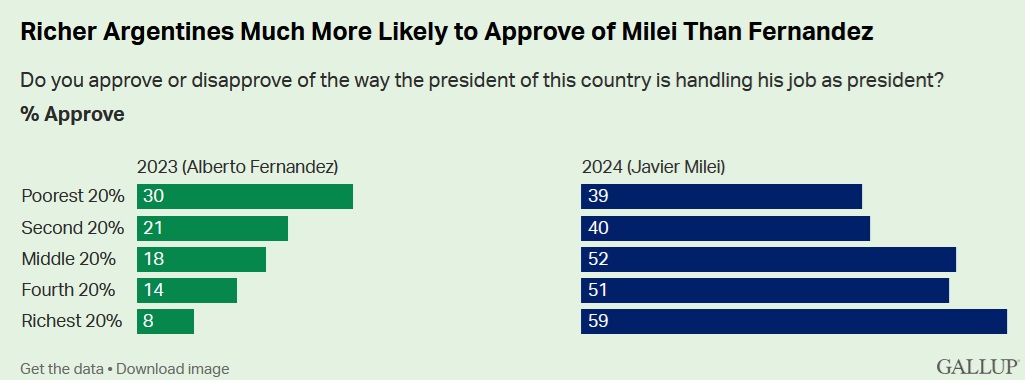Today is the one-year anniversary of Javier Milei’s inauguration as President of Argentina. Let’s start our celebration with this video from Reason.
To grasp the challenge Milei faced upon taking office, I recommend you watch every second of the video.
But if you don’t have time for a 45-minute video, all you need to know is that Argentina was an utter economic disaster (see this graph from the Financial Times, this chart from the Economist, and this timeline from Human Progress).
Milei took office last December and immediately started slashing spending and red tape, and he’s achieved amazingly quick results.
- Dramatic spending cuts (real cuts, not phony Washington “budget cuts”) leading to a balanced budget.
- Dramatic reductions in inflation thanks to better monetary policy and better fiscal policy.
Milei warned upon taking office that Argentina would suffer some short-run pain before there was a recovery.
The good news is that there’s already evidence of economic improvement. As you can see from this chart, private-sector wages have begun to rebound after a lengthy period of decline.

The chart comes from a report in the Financial Times.
Here are some excerpts from that analysis.
Having taken over an economy on the brink of hyperinflation, Milei slashed the monthly inflation rate from 26 per cent last December to 2.7 per cent in October. The chronically depreciating peso — which Milei compared to “excrement” last year — has strengthened significantly against the black market dollar over the past six months. Since his election, Argentina’s long-distressed sovereign bond prices have roughly tripled. …Milei has used executive powers to get around his lack of a majority in Congress, enacting hundreds of deregulation measures… He has also slashed public spending to deliver a primary fiscal surplus every month this year — after more than a decade of uninterrupted deficits… Milei has prioritised tackling Argentina’s inflation rate above all else. His main strategy has been “taking a chainsaw to the state”, as his catchphrase goes, cutting spending from 44 per cent to 32 per cent of GDP. …salaries in the public sector, which employs a fifth of workers, remain 17.5 per cent down. …Investors are bullish… Argentina’s country risk — the premium over US Treasuries that investors demand to hold its bonds — has dropped from more than 2,000 basis points to about 750 since Milei took office.
Since the FT is a center-left establishment outlet, this is a remarkably positive summary of Milei’s achievements.
The people of Argentina seem to understand that things are getting better.
Here is some polling data from Gallup. Look at the uptick in optimism since Milei took over.

But here are the results that are even more impressive.
Even the poorest part of the population gives Milei higher approval rankings that his leftist predecessor.

Let’s conclude our one-year anniversary celebration with some passages from Mary Anastasia O’Grady’s recent column in the Wall Street Journal.
Mr. Milei begins his second year in office on Tuesday. He inherited a large fiscal deficit, swelling debt and a 2023 inflation rate of more than 200% from Peronist former President Alberto Fernández. At his inauguration Mr. Milei was careful to warn the nation that recovery would be painful. …Even so the president’s public approval is above 50%. He scores higher in public trust than any of the past three presidents after 12 months in office. …The recession is probably over and next year the economy might grow 4% to 5%. Country risk has fallen sharply. Inflation still isn’t whipped…but relative to recent history it’s tame. For now he can boast a softer-than-expected landing and some stability, which a year ago seemed out of reach. …Where deregulation happens, prices decline in the range of 30%.
For his first year in office, Milei passes with flying colors. He is showing the world that free markets are the recipe for growth and prosperity.
P.S. Here are previous columns in this series.
- In Part 1 of this series, I showed how Javier Milei has done a great job shrinking the burden of government spending.
- In Part II, I investigated how much he might be able to improve Argentina’s ranking in Economic Freedom of the World.
- In Part III, I shared central government spending data to reveal that Milei has been outstanding rather than merely impressive.
- In Part IV, I reviewed two of the major structural obstacles to Milei’s agenda of economic reform and national revival.
- In Part V, I examined Milei’s efforts to reduce the suffocating impact of excessive regulation on Argentina’s economy.
———
Image credit: Ilan Berkenwald | CC BY-SA 2.0 DEED.



